Do you have your bonnet ready for tomorrow? I have a sweet little fascinator I’m going to wear.

for early a.m. services in our neighborhood church.
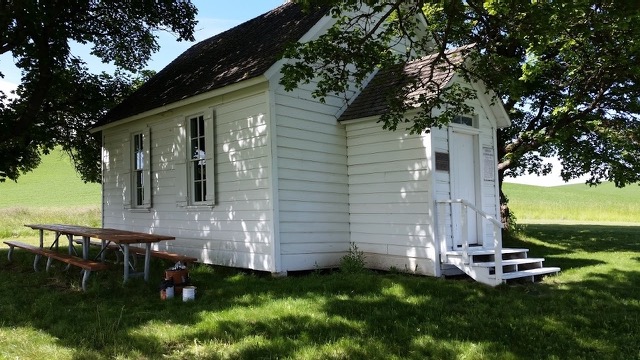


You know that pondering tilt of the head a person gives a work of art they’ve just completed? Writing about your life is that exactly. You step back, pick up your paint brush, apply a dab of compassion here, a brush stroke of flair over there. Putting your life on canvas allows you to see what your life looks like through the eyes of others.
Going Granny (actually my grandkids call me Nanny) is my best achievement yet! Here’s a phone message my barely two-year grandgirl left for me on my 58th b-day. I guarantee it; this will make your day.






























Do you have your bonnet ready for tomorrow? I have a sweet little fascinator I’m going to wear.

for early a.m. services in our neighborhood church.




I don’t love the havoc the many wild rabbits at my farm create, like early this fall when they girdled an apple tree I’d recently planted. I always put protective wrap around my fruit trees before winter sets in to ward off rabbits but last fall they started nibbling mid-September.
But this is endearing. Over the years I’ve planted huge patches, entire lawns, in vinca minor (Myrtle). I clip strands of Myrtle sometime in October, line up dozens of canning jars filled with water, and over the course of the winter, each strand grows roots that I plant in the early spring.
Here is one of my patches, along my back path. It was one of the first places where the snow started giving way last week so a family of rabbits got busy and opened a bistro with Myrtle on the menu. After eating, they played on the dance floor (my deck).

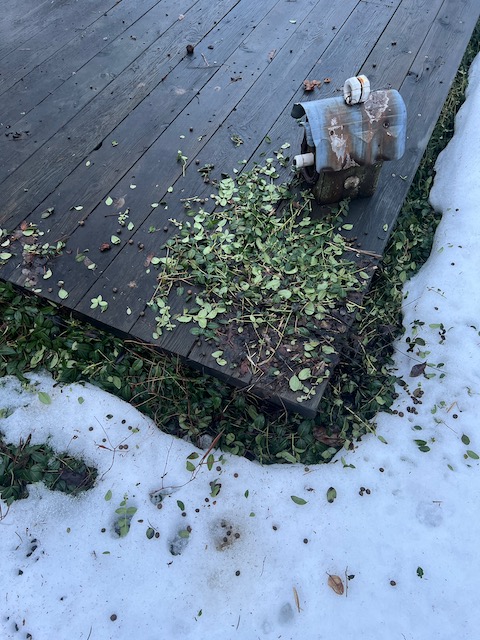
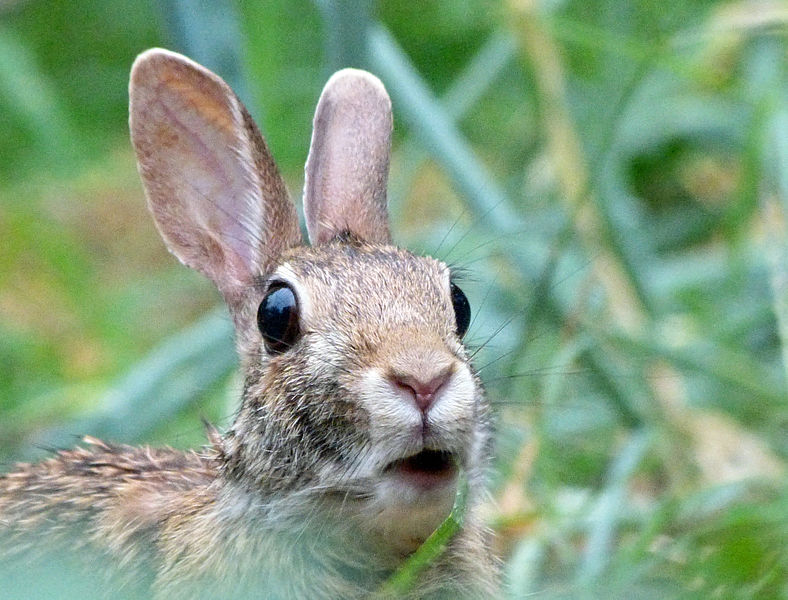
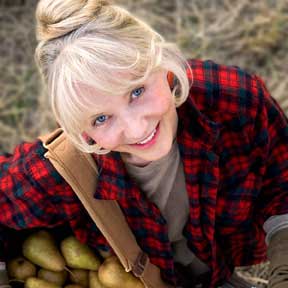

Everyone and everything’s a tad prickly this winter. With a serious spike in humidity mixed with temperatures the opposite of flaring, the lancing frigidity has become ever so piercing.
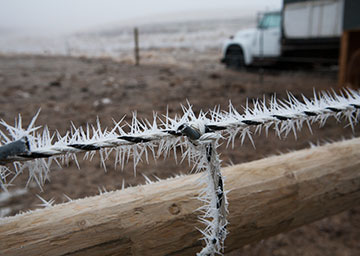
It’s definitely not for the spineless or the quill-willed. Everyone is acting briery, thorny, and prickly these days. Daily chores require a many-pronged approach.
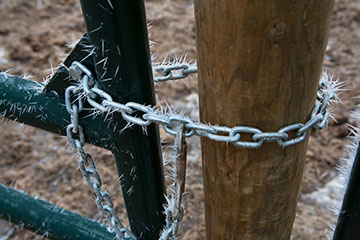
I have been watching lately on weather.com that the temperatures are rather compressed in Idaho meaning there is not a huge span between day and night. Plus the northern part has had air stagnation warnings for over a week. So, it makes sense that the day moisture begins to freeze as the sun goes down while the dew point doesn’t vary greatly either. Perfect ingredients for the whispy hand of Jack Frost!
And the southern part should have one, too, Winnie! We haven’t seen the sun in 13 days and 4 hours and 32 minutes, but who’s counting?
I am new to your site, but have already fallen in love with the magazine!
Brrr…here in Western Pa., we have wind chills(today is a -2, without the wind chill… going to be a high of 0!) and artic blasts and snow…I have not seen anything like these photos and they are so neat..hmm..cool…I run outside to do the necessary chores…and, back in like a cat I sit in the sunshine on the sofa…meow…think spring!!!
But gorgeous photos!
I’d like to say that I woke to -15 degrees this morning. Sat & drank tea and cuddled under my old afghan. It is hard to get motivated to go outdoors. But alas our wood stove/boiler is in our garage, so we mosey out to keep the rest of us warm! 🙁 Hope all your animals are doing well everyone!
High of 10 here today, in Lancaster county PA, windchill was -15. Steering fluid in car froze, broke the steering column, now that’s cold! Thanks Terry for thinking of the animals !
hi Maryjane, well some sort of glitch! the dates are from 2014 !!
That mid winter prickly thorny sentiment seems to be at it’s all time high! Not just here in Florida…..but all across the nation.
Oh yes. This winter is definitely causing people to be prickly. Our weather is all over the place and I bet all those being hit by this crazy winter are feeling extra prickly. I love the photos. They definitely look dangerous, but fascinating.
I cannot believe this artistry. It just gets more interesting each day!!
OH!! What majestic beauty even in the midst of bitter winter weather! Your photos captured it so magnificently, MaryJane! Thank you for sharing from while you were out in the chilling temps.
Joyfully….~Sandie
What an amazing reminder of the mastery and detail in nature’s art that is there every single day for us ~ if we would only stop for a moment to observe. Such an exciting wake-up photo this morning!


Today, I discovered an in-the-works documentary that might just revolutionize our nation’s notions about elderly care, child care, and the power inherent at their intersection. The movie is called The Growing Season (formerly titled Present Perfect), and it is scheduled to be released later this year.
“Stepping into most any nursing home, it’s hard to ignore the sense of isolation one feels on behalf of the residents living there, and even harder to reconcile that with the fact that old age will inevitably come for us all. In our fast-paced, youth-obsessed culture, we don’t want to be reminded of our own mortality. It’s easier to look away,” begins project leader and Seattle University adjunct professor Evan Briggs.
She was inspired to delve into the concept of elderly care when she learned about the Mount Intergenerational Learning Center in Seattle, an award-winning child-care program located on a campus that is also home to more than 400 senior residents.

Photo, thegrowingseasonfilm.com
“When I heard about the Mount and its Intergenerational Learning Center, I was struck by the simple perfection of the concept. I was further intrigued by the idea that with neither past nor future in common, the relationships between the children and the residents exist entirely in the present,” Briggs explains. “Despite the difference in their years, their entire sense of time seems more closely aligned. As busy, frazzled, perpetually multi-tasking adults, we are always admonished to live ‘in the moment’. But what does that mean? And with the endless distractions provided by our smart phones and numerous other devices, how can we? I was curious to observe these two groups, occupying opposite ends of the life spectrum, to see firsthand what it meant for them to simply be present with each other.”
Briggs says that The Growing Season explores the experience of aging in America—both growing up, and growing old—and captures the subtleties and complexities of children’s interactions with their elderly counterparts. She challenges viewers to consider what value a person offers to others throughout his or her life. “Are we asking for the right contributions from each other? How do we measure and define a successful life?” she asks. “While this film doesn’t shy away from confronting some difficult realities, it is ultimately a life-affirming story of hope that, we believe, just might lead to serious positive change.”
Here’s a sneak peek:
You can also pre-purchase a digital download of the film to help support the project on IndieGoGo.com.
FABULOUS IDEA!! We need to do this alot more and get older folks in with small children as they all live in the ” present” . heartwarming film clip- brought tears to my eyes.
This is what communities should all watch and work to incorporate into the lives of it’s citizens. Oh, how I would love to see this idea take hold and become the norm rather than what exists at present. Thanks for sharing!
I really love this idea and I bet so many lives have been touched by this experience. It would be nice to see this happening in more places. I could only imagine how lonely people feel in a nursing home, but children could bring them much joy just by spending time with them. Really hope this idea catches on.
What a beautiful idea ! When I used to visit my aunt on a nursing home, it was sad to see the lonely patients. Some were put out to the hall and just left there , alone and nothing to do. I hope this concept spreads!
Thank you for the link to the growing season film. I am a pre school teacher, and watching this truly touched my heart.💞
My father was 86 when he died (at home with his family around him) and during the last few years, even thru dementia, he always lit up when he was with the grandchildren, and he would hold the smallest in his arms an be face to face, softly talking to them with a HUGE smile on his face and a RAPT FOCUSED child looking up at him. They connected on a spiritual level, one had just crossed the threshold from spirit to physical, and the other was preparing himself to travel the opposite direction, and they both seemed connected (with ease) to BOTH sides. At one point, while holding a grandchild who was not yet walking, he kept saying, “Yes, We understand Each Other….” over and over. milkaTheAppreciator
What a sweet photo of a handmade toy mouse. And ofcourse the saying is perfect isn’t it? Who made the mouse?
Bravo Carol! I noted that the mouse also does not use a real Google+ map either. The “way” comes form the inside which makes it harder to figure out. In these early years of the 21st Century, it seems harder and harder to sing from the same page along the “way”. God Speed!
Love this saying. I know I need to work on this more in my life. The little mouse with a backpack makes it all that much more adorable.


What, you didn’t know?
You mean to tell me you’ve never properly celebrated this upcoming important holiday?

Fitzhugh Lee Image Public Domain via Wikimedia Commons.
That’s okay, I forgive you. But in order to show proper penance, I’d like to you to memorize these whisker-ocious facts (and maybe post a photo in the comments of the most highly groomed bearded man in your life).

photo, Ikie2 Designed by Incredibeard via Wikimedia Commons
If you or the significant other in your life can’t quite wrap your brain around (or can’t quite grow) a fully impressive set of whiskers, perhaps a mustache is the place to start. He can even participate in the highly competitive The World Beard and Mustache Championships, located this upcoming September in Northern California. There are all sorts of categories to sign up for, from the humble Dali Mustache to the Imperial and the Freestyle Goatee. Check out these past winners and prepare to be inspired by follicle greatness!
Whatever your preference, opinions about facial hair are varied and sometimes quite amusing. Check out these quotes about the fabulous beard:
“I have the terrible feeling that, because I am wearing a white beard and am sitting in the back of the theatre, you expect me to tell you the truth about something. These are the cheap seats, not Mount Sinai.” ~ Orson Welles
“You know, I just tend to grow my beard out for ‘Parks and Rec.’ As an actor it’s always easier to shave or cut your hair for a role, but it’s hard to put fake hair on or grow hair for a role. When you look at pictures of me, the longer my hair is, the longer my facial hair is, that’s just the longer I haven’t gotten a job.” ~ Chris Pratt
“I will never shave off my beard and moustache. I did once, for charity, but my wife said, ‘Good grief, how awful, you look like an American car with all the chrome removed.” ~ Rolf Harris
“A man’s face is not a rich person’s lawn; you are wasting resources if you devote that much energy to trimming your beard, sideburns, or mustache just so. Nor is a man’s face the woods; there need not be the tangled weeds, shrubbery, and wildlife/eggs benedict that get ensnared in them.” ~ Ellie Kemper
“A decent beard has long been the number one must-have fashion item for any fugitive from justice.” ~ Craig Brown
“Kissing a man with a beard is a lot like going to a picnic. You don’t mind going through a little bush to get there!” ~ Minnie Pearl
Well, have I convinced you? Raise your pint of ale high to this most manly of all holidays. (And be prepared to share your styling gel. Just sayin’.)
None of the men in my family are sporting beards this summer, but the ear of fresh sweet corn I had last night for dinner had a kind of beard …
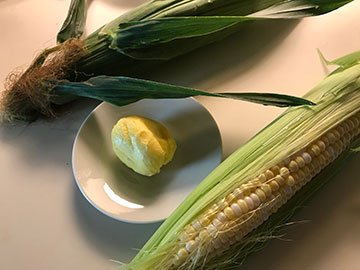
and my bees are “bearding” (forming “beards” on the outside of the hive during hot weather to keep the hive from overheating).
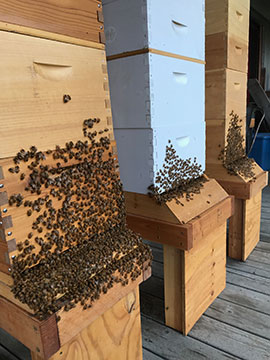
I’ve never ben a fan of beards for some reason. The fancy ones with mustaches just look weird to me too. However, there seems to be a lot of men who enjoy the challenge of taming and creating their beards into works of art. And why not?! This is a totally new holiday to me. Who knew?
Those quotes! So good! My kids, by the way, have never seen their father without his beard, and they’re pushing 40.
My husband has a very basic trimmed beard and mustache. He has joked in the past about growing a long mustache and curling it on the ends! I think if he ever did I would just laugh. My husbands uncle does have a large and long mustache that he points out to the sides. I think this is where he gets the silly ideas.
My hubby grows a pretty nice (any hefty) beard almost all year round. He only shaves it off in the spring when his seasonal allergies hit and make him miserable. Once that season is past, he starts growing it again. He a lot less “scratchy” with a beard and than his five o’clock shadow!
CJ
around here ALL the men grow beards for Deer hunting season, need I say more?
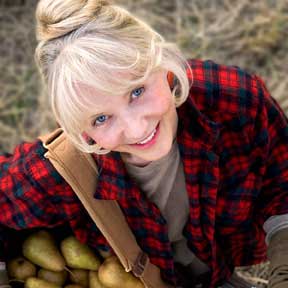

If you’re a fan of argan oil in your skin-care routine, I have a bit of historical (er, biological?) trivia for you.
It begins with the stout seeds of the shrubby Moroccan Argania spinose tree …
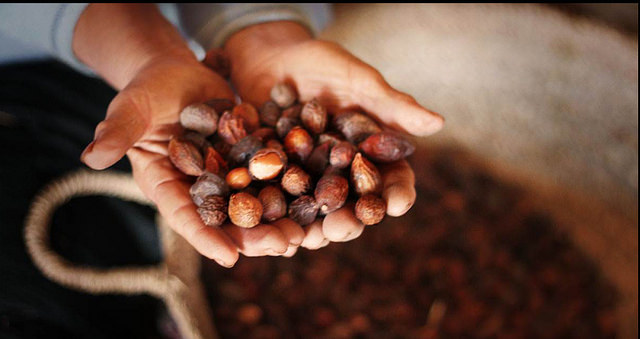
Photo by Songwon Lee via Flickr
Seeds that are gathered by … goats.

Photo by Grand Parc – Bordeaux, France via Wikimedia Commons
That’s right, we’re talking about those wacky tree-climbing goats that scream, “Photoshop!”
But there’s no technological trickery at work here.
These goats do defy gravity, and while they are loping about in the limbs of trees, they eat argan seeds.
Can you see where I’m going with this? (Just be glad you get your argan oil from a bottle.)
Here’s the history of argan oil, in a nutshell, according to Michael Graham Richard of Mother Nature Network:
“Argan oil is quite popular these days in skin- and hair-care products, but this is nothing new. Indigenous Berber tribes in the region actually did something similar, though they didn’t get the argan oil out of a bottle that they bought in a store; goats would climb up argan trees and eat the fruits, swallowing whole the core, which looks a bit like an almond.”
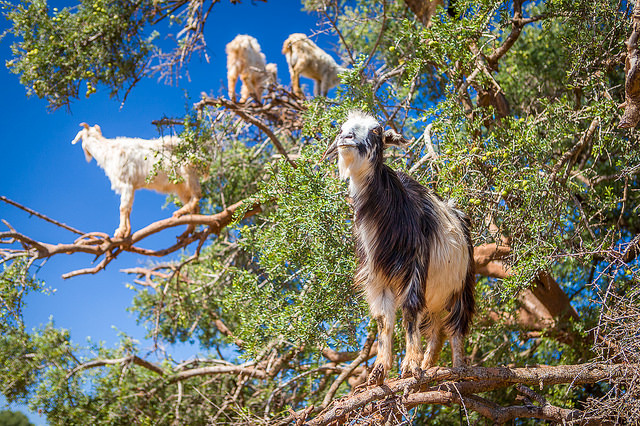
Photo by Fred Dunn via Flickr
Okay, we’re all caught up to that point, so …
“This nut would pass through the goat’s digestive system and end up in goat droppings, where it would be collected. To get at the oil inside, you would then have to crack it open with a stone, and grind the seeds inside. The resulting oil was then used for cooking and as a skin treatment.”

Photo by Chrumps via Wikimedia Commons
Now you know.
As with so many modern manufacturing practices, the middlemen (middlegoats?) have been cut from the process of processing argan oil, but that doesn’t stop them from climbing trees to eat seeds.
Watch and laugh:
When we went to Morocco last Spring, we went to a place that sells Argan cosmetics at cheaper prices than Spain. You can just imagine all of us Americans flooding this little store to get a few items each!
As a hairstylist who is always recommending argan oil to my clients, I really enjoyed this! I had no idea, but that is so cool. Now, do I tell my unsuspecting customers?? Haha!
love those tree climbing goats!! in all my travels tho I have never seen them, darn!
I have some Argan oil for my hair and I use it occasionally, but I would have never guessed that’s how it was made!! Loved watching the goats climbing in the tree. It gave me a chuckle!


“Ah, wisteria … my favorite. I had one when I was young and newly married and living in a very old house. Since then, I only long for another,” Beverly (Bee Haven Maven) wistfully writes. “I have a picture in my mind of an arbor with wisteria on either side and a great old wooden porch swing hanging beneath. My peaceful dream is only interrupted by the buzzing of bees around my head—they really love the blossoms. Perhaps this will be another project for another year…”
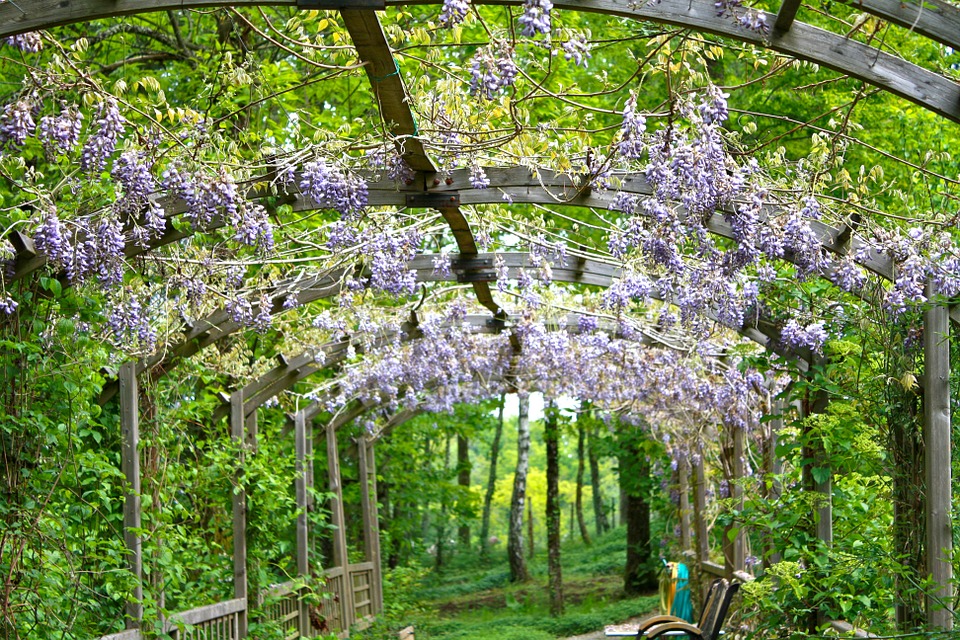
Photo by Ink Flo via Pixabay
I feel certain that Bev is not the only one feeling wistful for wisteria this time of year. They are truly lovely, but not easily grown on a whim. Cultivating these divine vines requires time and patience (like, years’ worth). So, if you’re planning a planting, prepare for a two- to three-year process of hurry-up-and-wait.

Photo by Carlotta Silvestrini via Pixabay
Another consideration before shopping for seeds: only two varieties of wisteria are native to the U.S. This fact matters because the Asian varieties (Wisteria sinensis and Wisteria floribunda) are considered invasive, noxious weeds that will aggressively spread and displace native vegetation.
“Consider growing the less invasive American wisteria (Wisteria frutescens), which grows in Zones 5 to 9. The vine grows 25 to 30 feet long with shiny, dark-green leaves and large, drooping lilac or purple-blue flower clusters, which appear after the plant has leafed out. However, note that the flowers are unscented, unlike the Asian Wisteria,” advises the Old Farmer’s Almanac. “Another native American is Wisteria macrostachya (Zones 4 to 9) or Kentucky wisteria. This late-season bloomer is native to the southeastern U.S. and bears unscented bluish-purple flowers after growing only two to three years, making it the quickest wisteria to bloom.”
Rather than wait for wisteria to bloom, take a (virtual) vacation to Kawachi Fuji Garden in Kitakyushu, Japan. This gorgeous garden boasts over 100 flowering wisteria plants from 20 different species. The voluminous vines create Kawachi Fuji’s famous wisteria tunnel.
Get details at Japan-Guide.com.
I’ve only seen Wisteria ONCE in my life. I nearly lost my mind with its beauty and charm!
WE are fortunate to grow Wisteria here in Florida. Our blooming occurs in late February and March when we are in the height of our Spring season. It is so lovely and the fragrance is light and sweet. Our Bumblebees go nuts when it blooms too!
Beautiful!
Very beautiful! It would be so peaceful to sit among Wisteria and take in it’s beautiful purple color. I believe an old neighbor of mine had some hanging along her fence. They did have a lovely little fragrance which was nice when I walked by.


According to the U.S. Census Bureau and People for the Ethical Treatment of Animals (PETA), of the 243 million turkeys raised in the U.S. this year, about 45 million of them ended up on our Thanksgiving tables.
The American Farm Bureau Federation reports that Americans paid approximately $49.87 on average for a Thanksgiving Day meal for 10 people. In 2015, the average retail price for turkey was $1.45/pound (up from $.99/pound in 1995). But in a survey about pricing this year, while 29 percent of Americans said that less than $1.50 per pound was a fair price for turkey, nearly the same percent of respondents said they would pay $5 or more per pound. Sounds like more folks are going organic for the holidays!
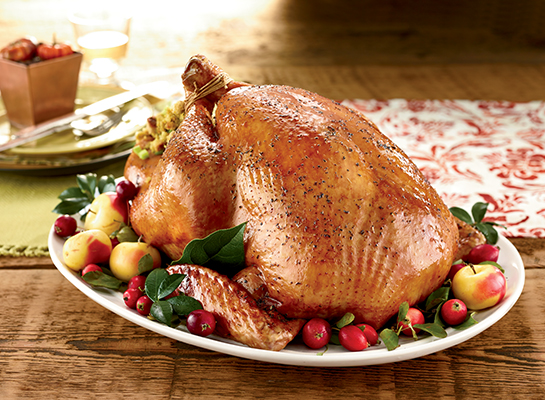
organicprairie.com
Find organic turkeys at OrganicPrairie.com.
I love your bright colored fascinator! I did not wear one for Easter. Now I will need to find myself one for next year. Or I just may make my own.
Now that is one amazing Easter Bonnet! I do love this beautiful and quiet little church in your neighborhood. It sings of peace and love among its old beautiful tree friends. A perfect setting to enjoy the Easter message shared.
Oh my goodness! That fascinator is eye-catching. If I were in the church sitting somewhere behind you or nearby, close enough to see that fascinator, I’d keep losing my place in my Bible because I’d keep glancing over at it. What a charmer.